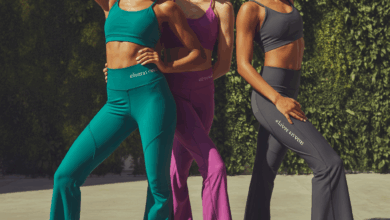Can You Workout After Laser Hair Removal? Safe Tips, Timelines & Workout Ideas

Have you ever stepped out of a laser hair removal appointment and wondered, “Can I still hit the gym tonight?” You’re not alone — between busy schedules and fitness goals, most people want to know how soon they can get back to sweating without compromising results or irritating sensitive skin.
Quick Answer: Yes — but timing and intensity matter
Short version: can you workout after laser hair removal? Yes, but how soon depends on the treated area, the intensity of your session, and your skin’s reaction. Most clinics recommend a cautious approach — light activity within 24 hours and a gradual return to full-intensity exercise over 48–72 hours or longer in some cases.
Why exercise timing matters after laser hair removal
Laser hair removal works by heating hair follicles. That heat can make skin temporarily sensitive, inflamed, or slightly red. Going straight into a sweaty, high-heat workout can:
- Increase irritation and prolong redness
- Raise risk of infection if sweat gets into micro-openings
- Cause friction from tight clothing that rubs treated skin
- Increase the chance of hyperpigmentation from heat and sun exposure
How long should you wait to exercise after laser hair removal?
Guidelines vary by practitioner and by body area, but here are practical timelines to follow:
- Light activity (walking, gentle yoga): 12–24 hours after treatment
- Moderate exercise (brisk walk, low-impact gym session): 24–48 hours
- High-intensity training (HIIT, spin classes, heavy lifting): 48–72 hours or until skin feels normal
- Hot tubs, saunas, steam rooms, and swimming pools: avoid for at least 48 hours (sometimes up to 1 week)
For larger areas (full legs, full back) or more aggressive settings, your provider may advise waiting up to a week before resuming intense workouts.
Practical post-laser workout tips
1. Assess your skin first
If your skin is red, warm, or tender, choose rest or gentle movement. If it looks and feels normal within 24 hours, you can progress to light-to-moderate activity.
2. Avoid heat and heavy sweating early on
Save hot yoga, saunas, and intense cardio for a few days. Increased body temperature can exacerbate inflammation.
3. Choose low-friction clothing
Wear loose, breathable fabrics to prevent chafing — important when treating areas like underarms, bikini line, or inner thighs.
4. Modify workouts by treatment area
- Underarms: skip pull-ups, heavy lat work, or anything that causes rubbing for 48 hours
- Bikini line or pubic area: avoid cycling, heavy squats, or tight leggings for 48–72 hours
- Legs: opt for a brisk walk or elliptical instead of sprints or heavy squats for at least 48 hours
Workout variations you can do after laser treatment
Here are safe, effective sessions to keep progress on track without compromising recovery.
Day 1–2: Gentle movement
- 30–45 minute walk outdoors or on a treadmill
- Restorative yoga or gentle stretching session
- Light core work (avoiding friction on treated areas)
Day 2–4: Low-impact conditioning
- Stationary bike at an easy pace (if legs weren’t treated)
- Resistance band strength session focusing on non-treated regions
- Swimming can be resumed only after the initial 48–72 hour window and if your provider approves
Day 4+: Gradual return to intensity
When your skin is no longer sensitive, reintroduce intervals, heavier lifts, and sweaty classes incrementally. Monitor your skin; if irritation returns, dial it back.
Post-treatment self-care and lifestyle advice
- Keep the area clean and gently pat dry — avoid scrubbing
- Apply a cool compress or recommended soothing lotion (aloe vera or a provider-prescribed balm)
- Avoid sun exposure and use broad-spectrum sunscreen on treated areas for at least two weeks
- Hydrate well — healthy skin heals faster
- Follow any specific aftercare instructions given by your clinic
Real-world examples
Case 1: Sarah, a weekend runner, had lower-leg laser removal and skipped her usual Saturday 10K. Instead she took a long walk plus a light lower-body mobility routine. By Monday she did a short tempo run at reduced intensity and resumed full training later that week.
Case 2: Jason, a CrossFitter, treated his underarms. He avoided kipping pull-ups and heavy overhead presses for three days, substituting rowing and single-arm dumbbell work to keep his conditioning without irritating the area.
When to see your provider
Contact your laser technician or dermatologist if you experience:
- Severe swelling, blistering, or intense pain
- Signs of infection (pus, spreading redness, fever)
- Skin changes that don’t improve within a few days
Can you workout after laser hair removal — final guidance
So, can you workout after laser hair removal? Yes — but be smart about it. Start slow, avoid heat and friction, and listen to your skin. With basic precautions you can maintain fitness without compromising results.
Frequently Asked Questions
Wait at least 48–72 hours for high-intensity cardio. If your treated area is still red or tender, delay longer. Always follow your provider’s specific instructions.
Light resistance training is usually fine after 24 hours, but avoid exercises that cause friction or pressure on treated areas for 48–72 hours. Modify movements to protect sensitive skin.
Most clinics recommend avoiding pools, hot tubs, and the ocean for at least 48 hours to reduce infection risk and irritation. If you have any broken skin or blisters, wait until fully healed.
Want a safe post-treatment fitness plan?
If you’d like a tailored workout that respects your laser recovery, check out our workout routines page for low-impact plans, and visit our wellness tips and nutrition guides to support skin healing and performance. Ready to get moving safely? Start with a gentle 20–30 minute mobility session today and listen to your body.
Call to action: Book a quick check-in with your laser technician if you’re unsure, then commit to a smart, stepwise return to workouts — your skin and your fitness will thank you.





